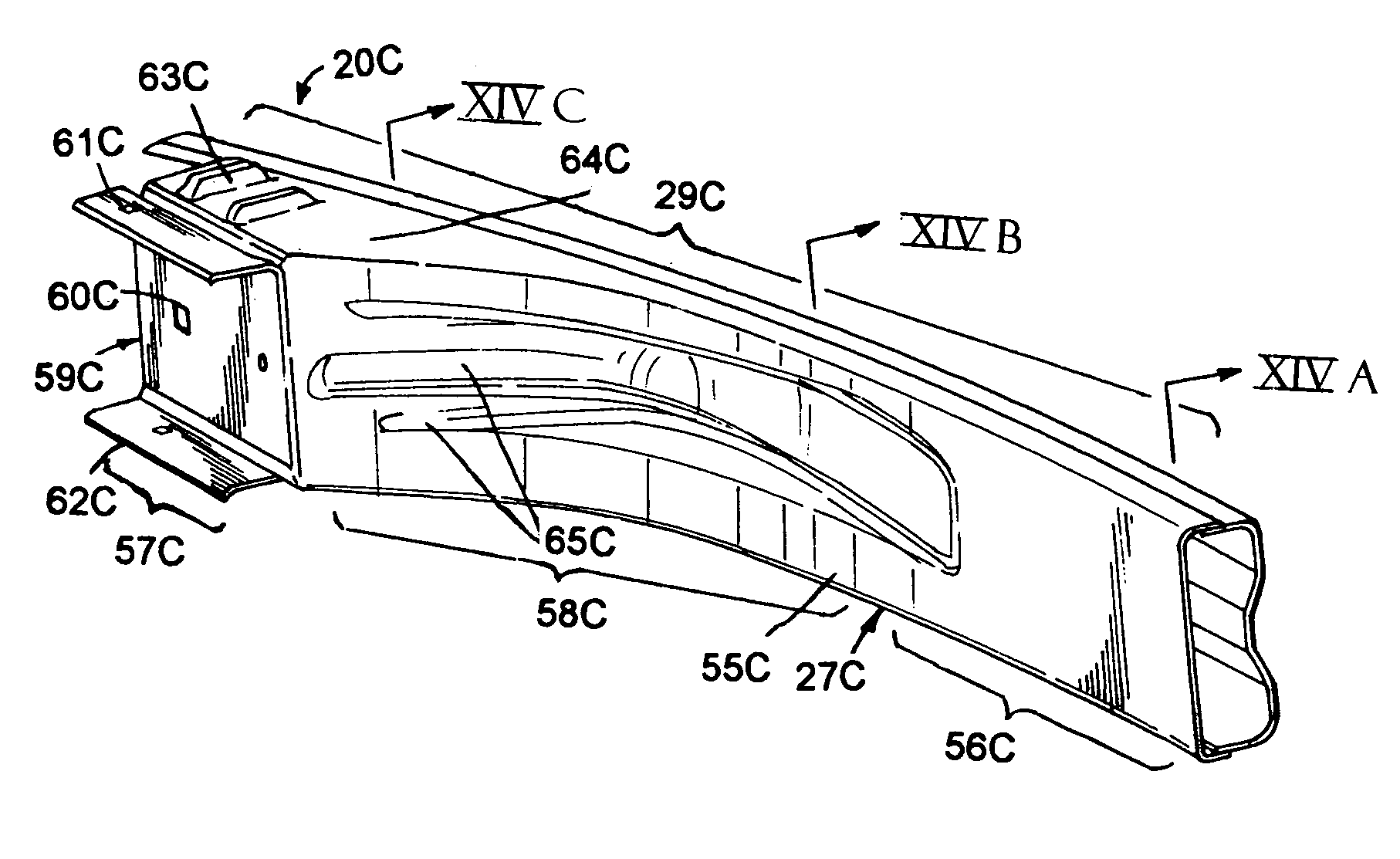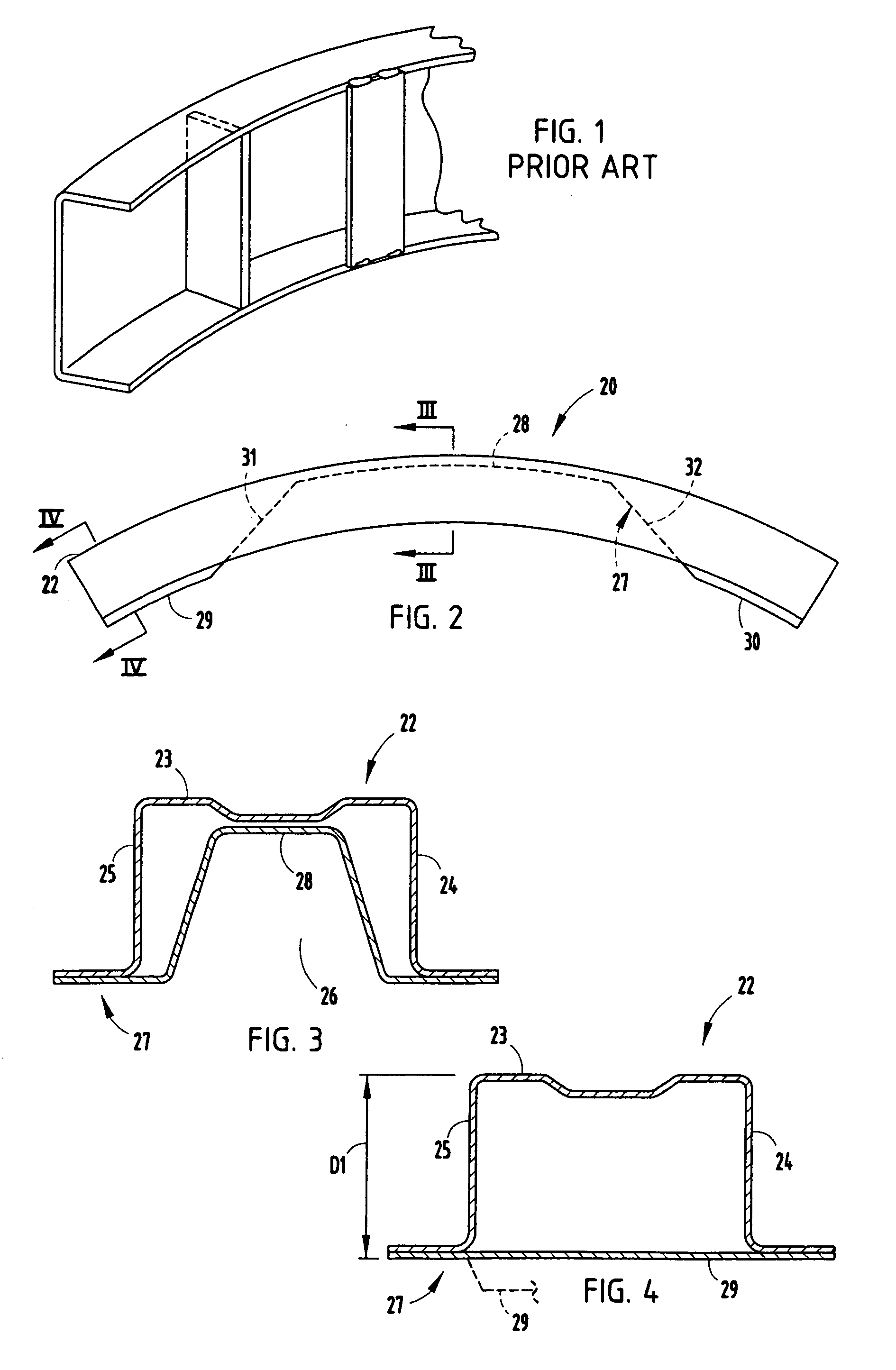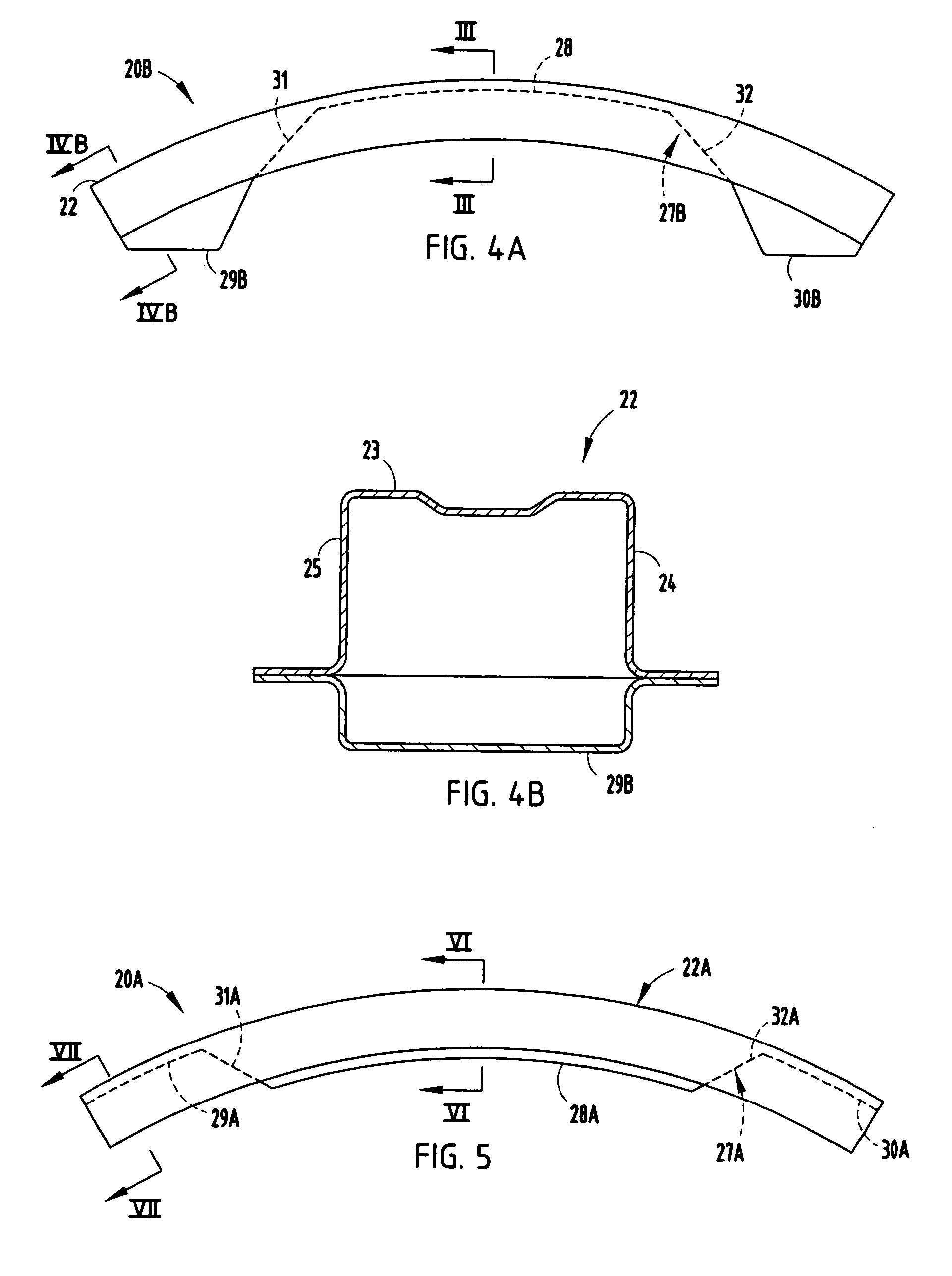Vehicle bumper beam
a technology for bumper beams and vehicles, applied in the direction of bumpers, vehicle components, vehicular safety arrangments, etc., can solve the problems of kinks, affecting the shape of the beam, and becoming more and more difficult to form raw sheet stock into the desired beam shape, etc., to achieve optimally high strength-to-weight ratios, increase cost, and ultra-high strength
- Summary
- Abstract
- Description
- Claims
- Application Information
AI Technical Summary
Benefits of technology
Problems solved by technology
Method used
Image
Examples
Embodiment Construction
[0033]The present invention focuses on a bumper beam 20 (FIG. 2) (and beam 20A, FIG. 5; and beam 20B, FIG. 4A) utilizing a roll-formed front section (22, 22A) (also called a “front channel” or “rolled section”) and a stamped or molded back section (27, 27A, 27B) (also called a rear channel” or “reinforcement section”) mated together to form a beam of varied tubular cross-sectional shape. More specifically, the present invention represents a two-piece solution that when combined produces a tubular bumper beam with varying cross section across the length of the bumper and material properties that change around the cross section. The ability to change cross section across bumper length allows for optimization of impact beam performance, weight, and cost along any selected region of the beam. For example, the use of ultra-high-strength steels (UHSS steels) provides desirable characteristics for impact beam construction. The high mechanical properties inherent to UHSS steels support impa...
PUM
 Login to View More
Login to View More Abstract
Description
Claims
Application Information
 Login to View More
Login to View More - R&D
- Intellectual Property
- Life Sciences
- Materials
- Tech Scout
- Unparalleled Data Quality
- Higher Quality Content
- 60% Fewer Hallucinations
Browse by: Latest US Patents, China's latest patents, Technical Efficacy Thesaurus, Application Domain, Technology Topic, Popular Technical Reports.
© 2025 PatSnap. All rights reserved.Legal|Privacy policy|Modern Slavery Act Transparency Statement|Sitemap|About US| Contact US: help@patsnap.com



